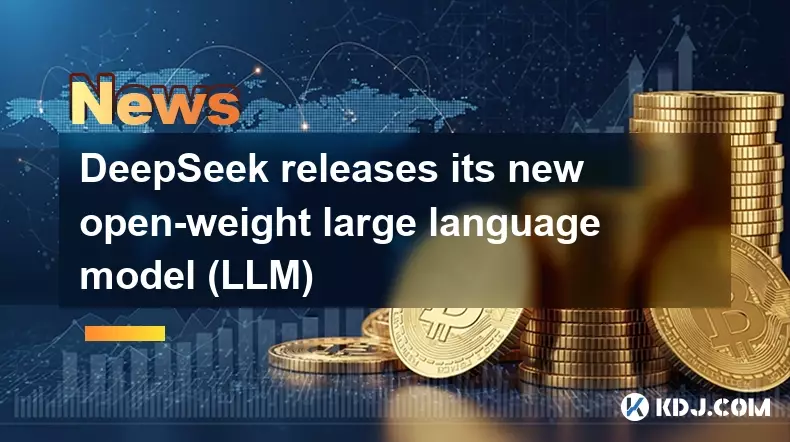 |
|
 |
|
 |
|
 |
|
 |
|
 |
|
 |
|
 |
|
 |
|
 |
|
 |
|
 |
|
 |
|
 |
|
 |
|

Chinese artificial intelligence development company DeepSeek has released a new large language model (LLM) on the hosting service Hugging Face.
The latest model, Prover V2, is being released under the permissive open-source MIT license. It is a continuation of the Prover V1 line, first announced in August 2024. The first version of the model was presented in a paper titled “Prover: A Large Language Model for Compressing Mathematical Knowledge and Programming Lean 4.”
Prover V1 was trained to translate math competition problems into the Lean 4 programming language, which is used for proving theorems and was developed at Microsoft Research. The model was based on DeepSeek’s seven-billion-parameter DeepSeekMath model and was fine-tuned on synthetic data. Synthetic data refers to data used for training AI models that was, in turn, also generated by AI models, with human-generated data usually seen as an increasingly scarce source of higher-quality data.
Prover V1.5, in turn, improved on the previous version by optimizing both training and execution and achieving higher accuracy in several common benchmarks.
The new Prover V2 model is expected to run from RAM or VRAM. It has 671 billion parameters and weighs approximately 650 GB. To get them down to this size, Prover V2 weights have been quantized down to eight-bit floating point precision, meaning that each parameter has been approximated to take half the space of the usual 16 bits, with a bit being a single digit in binary numbers. This effectively halves the model’s bulk.
So far, the improvements introduced by Prover V2 are unclear, as no research paper or other information has been published at the time of writing. The number of parameters in the Prover V2 weights suggests that it is likely to be based on the company’s previous R1 model. When it was first released, R1 made waves in the AI space with its performance comparable to the then state-of-the-art OpenAI’s o1 model.
The importance of open weights
Publicly releasing the weights of LLMs is a controversial topic. On one side, it is a democratizing force that allows the public to access AI on their own terms without relying on private company infrastructure.
On the other side, it means that the company cannot step in and prevent abuse of the model by enforcing certain limitations on dangerous user queries. The release of R1 in this manner also raised security concerns, and some described it as China’s “Sputnik moment.”
Open source proponents rejoiced that DeepSeek continued where Meta left off with the release of its LLaMA series of open-source AI models, proving that open AI is a serious contender for OpenAI’s closed AI. The accessibility of those models is also constantly improving.
Now, even users without access to a supercomputer that costs more than the average home in much of the world can run LLMs locally. This is primarily thanks to two AI development techniques: model distillation and quantization.
Distillation refers to training a compact “student” network to replicate the behavior of a larger “teacher” model, so you keep most of the performance while cutting parameters to make it accessible to less powerful hardware. Quantization consists of reducing the numeric precision of a model’s weights and activations to shrink size and boost inference speed with only minor accuracy loss.
An example is Prover V2’s reduction from 16 to eight-bit floating point numbers, but further reductions are possible by halving bits further. Both of those techniques have consequences for model performance, but usually leave the model largely functional.
DeepSeek’s R1 was distilled into versions with retrained LLaMA and Qwen models ranging from 70 billion parameters to as low as 1.5 billion parameters. The smallest of those models can even reliably be run on some mobile devices.output: Publicly releasing the weights of large language models (LLMs) is a hotly debated topic. On one side of the argument, it is a democratizing force that allows the public to access AI on their own terms without relying on private company infrastructure. On the other side, it means that the company cannot step in and prevent abuse of the model by enforcing certain limitations on dangerous user queries.
Those who follow the artificial intelligence (AI) landscape closely will recall the fuss that ensued when DeepSeek, a leading Chinese AI development company, released its R1 LLM with 1.5 trillion parameters. The model, which achieved performance comparable to OpenAI’s o1, was made available on the Hugging Face hosting service with the permissive MIT license.
The release of R1 sparked a great deal of discussion in both the technical and economic spheres, with some comparing it to a “Sputnik moment” for China in the AI race. It also prompted a response from OpenAI, which announced that it would be releasing the weights of its own models in
免责声明:info@kdj.com
所提供的信息并非交易建议。根据本文提供的信息进行的任何投资,kdj.com不承担任何责任。加密货币具有高波动性,强烈建议您深入研究后,谨慎投资!
如您认为本网站上使用的内容侵犯了您的版权,请立即联系我们(info@kdj.com),我们将及时删除。
-

-

-

-

- 比特币,加密和智商:当天才遇到数字黄金时?
- 2025-09-30 23:17:30
- 当Binance调整保证金交易和炒作面对投资者退出时,高级智商个人大胆的比特币举动引发了辩论。这对加密货币的未来意味着什么?
-

- Stablecoins,美国创新和钱包代币:下一个边界
- 2025-09-30 23:15:03
- 探索美国创新和诸如$ best的钱包令牌越来越受欢迎的美国的稳定币的兴起。
-

- 乌克兰的NBU,硬币和加密货币:纽约人
- 2025-09-30 23:14:07
- 探索有关乌克兰加密货币场景,NBU的纪念硬币和模因硬币的兴起的最新信息。这是一次疯狂的旅程,所以搭扣了!
-

-

-































































